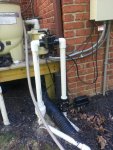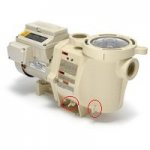- Aug 25, 2011
- 586
- Pool Size
- 15500
- Surface
- Vinyl
- Chlorine
- Salt Water Generator
- SWG Type
- Pentair Intellichlor IC-40
I have a suction side leak that's either new or newly noticeable. I'm trying to figure out the best way to find it. When I crank the pump up to full RPM, it will fill the basket all but some bubbles right under the lid. There is more air than used to be, so I know something has gotten worse.
I don't think the lid on my pentair intelliflo pump will be real conducive to pouring water over it nor am I convinced that I would be able to notice the difference to be honest. The pipe joints won't be a good candidate either. So I need something that I can put on that will visibly show me a leak.
I've used shaving cream in the past for some joints. Is that the best choice? Or is there something that might work better? How about the lid - if I can't really get water at it, any other suggestions?
I don't think the lid on my pentair intelliflo pump will be real conducive to pouring water over it nor am I convinced that I would be able to notice the difference to be honest. The pipe joints won't be a good candidate either. So I need something that I can put on that will visibly show me a leak.
I've used shaving cream in the past for some joints. Is that the best choice? Or is there something that might work better? How about the lid - if I can't really get water at it, any other suggestions?



